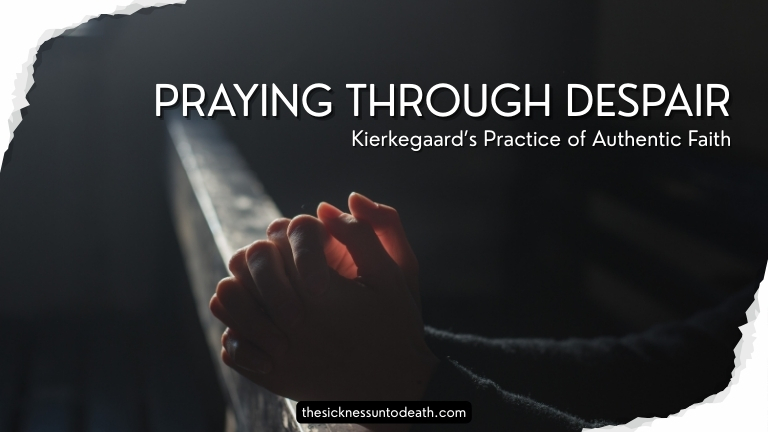Discuss how Kierkegaard’s writings on prayer and suffering encourage honest, vulnerable engagement with God during dark times.
There are times when prayer feels impossible.
When words don’t come.
When faith feels thin.
When you sit in silence—not because you’re peaceful, but because you’re exhausted. Grieving. Angry. Or just numb.
If you’ve ever been there, you’re not alone. And you’re not failing.
Søren Kierkegaard, the Danish philosopher and theologian, knew that kind of silence too. His writings reflect a deep understanding of despair—not just as emotional pain, but as a spiritual ache. And in that space, he found a way to pray that wasn’t about performance or perfection, but about being brutally, beautifully honest with God.
Prayer Without Pretence
For Kierkegaard, authentic faith begins with truthfulness—not just truth about God, but truth about ourselves.
“Prayer does not change God, but it changes the one who prays.”
This isn’t the kind of prayer that glosses over pain. It’s not full of polished words or forced optimism. It’s prayer that groans, questions, weeps—and still dares to speak.
To Kierkegaard, this raw honesty isn’t weakness. It’s the foundation of real spiritual life.
Despair as a Doorway
In The Sickness Unto Death, Kierkegaard describes despair not simply as sadness, but as a crisis of the self—a deep inner conflict between who we are and who we’re called to be.
And here’s what’s surprising: he doesn’t tell us to escape despair. He tells us to go through it.
Because only in facing the truth of our brokenness can we begin to build a faith that’s not borrowed or shallow—but real, grounded, and deeply our own.
What Does Prayer Look Like in the Dark?
For Kierkegaard, praying in despair means:
- Speaking to God without filters or fear
- Admitting the things you don’t understand
- Trusting that God is not offended by your questions
- Sitting in silence if that’s all you have
- Returning again and again, even when nothing seems to change
This is not performative faith. It’s faith forged in fire—in the furnace of grief, confusion, and loneliness. And yet, it’s in this very place that intimacy with God can grow.
“To dare is to lose one’s footing momentarily. Not to dare is to lose oneself.”
Even your doubt, even your pain—Kierkegaard believed it could become a kind of prayer. A silent reaching. A holding on.
Inwardness in a Noisy World
In a culture that prizes positivity and instant results, this kind of vulnerable prayer can feel countercultural. But Kierkegaard urges us to resist the pressure to appear “fine”.
He calls us to turn inward—not to spiral, but to wrestle, to listen, to pray in the deepest sense of the word. Not to fix ourselves, but to be found.
Final Thoughts: A Faith That Cries Out
If you’re praying through tears—or if you’ve stopped praying altogether—know this:
God is not looking for your perfect words.
He’s waiting for your honest ones.
Kierkegaard’s life and writings show that faith and despair are not opposites. In fact, they often live side by side. And through prayer—not performative, but personal—we begin to move from one into the other.
Need Something to Anchor You?
📖 Visit www.thesicknessuntodeath.com
There you’ll find a modern and accessible take on Kierkegaard’s reflections on faith, suffering, and the struggle to be yourself in the face of despair.
Whether you’re questioning everything or just holding on by a thread, this is a space for honest seekers. For those who need a faith that meets them in the dark, not just when the light returns.

